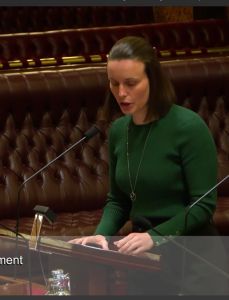by Councillor Charles Jago
At this week’s council meeting (20 June 2023), Council adopted an updated delivery plan, operational plan and budget, which included the rate increase (special rate variation – SRV) which was recently approved by the Independent Pricing and Regulatory Tribunal (IPART).
This rate increase is an important issue which directly affects the financial well-being of residents across Canada Bay LGA. Let me be upfront: I supported this rate increase – here’s my explanation.
The situation
With its costs rising faster than inflation, Council was starting to fall behind financially. This affected Council’s asset maintenance, but also environment/sustainability, IT, roadwork, traffic, open space and planning services. Slowly and directly – bit by bit – our council was heading toward bankruptcy. Its income was not paying for its operations, with costs rising more quickly than income.
In addition, Council couldn’t always cover the capital cost of infrastructure needed around new development. We frequently depend on grants, which enables us to do more than we could only on residential rates. At the same time, the government puts conditions on the grants which allows them further control over Council’s programs. They treat councils as simply an extension of government bureaucracy.
Council was between a rock and a hard place. Council finances were in deficit and would have stayed in deficit for the next ten years without a change. It needed the rate increase to provide the services that people expect and deserve.
Some residents have said that Council should have simply become more efficient. In fact, Council has been working really hard for years to become more efficient – that’s how we have survived for this long without a substantial rate increase.
Complicating this situation: the NSW government only allows councils to have limited rate increases. Council isn’t allowed to raise rates just when it wants to. Every year, the NSW government (through IPART) sets the maximum amount by which rates can be raised. In the case of Canada Bay, it could be argued that the rate rises which we have been allowed do not take account of our costs given the major population and housing growth in our LGA.
The main causes
- The NSW government requires councils to carry out many services which it (the state government) is unwilling to pay for, without compensating councils. For Canada Bay Council, this “cost shifting” (a subsidy to the NSW government) in 2015/16 amounted to $6.35 million, some 7.8% of our operational income in that year. Even before inflation, that’s significantly more than the annual rate increase Council has now implemented. Since then, cost shifting by the government onto councils across NSW has grown by almost 78% to $1.36 billion, amounting to some $460 per ratepayer per year! I don’t have recent specific cost shifting figures for Canada Bay, but that increase means that cost shifting could be around double (or more) the impact of the SRV.
The government’s latest painful example affecting Canada Bay is an unexpected $491,000 increase (26%) of the Emergency Services Levy, now up to $2.8 million. [Later update – the partial subsidy on the levy that council was receiving from government has also been eliminated, making the net increase over $941,000!] - The second major cause is that NSW government forces our council to implement a high level of development, but doesn’t allow us to charge developers for the full cost of infrastructure needed for the additional population. Councils only get funded for about two-thirds of the cost of this infrastructure. Then when the government forces councils to approve too much development, this pushes councils’ costs through the roof.
- In my view, the NSW government policy of reducing the flexibility of councils to raise rates and manage their own finances is unhelpful. In fact, it treats councils like children.
Most residents don’t notice that Council’s rates have been comparatively low compared to surrounding councils for a long time. Even after the increase to Canada Bay’s rates, they remain below the average rates of surrounding councils. In addition, the amount of increase may seem huge, but please take into account that after inflation and the fact that the increases are spread over four years, it will be significantly less.
It is fair to say that councillors have had differing opinions about the rate increase. It was clear that Council was economically falling behind. The difference of opinion was basically about trying to mitigate the impact on residents. Unfortunately, there are no other easy options.
I understand that people are hurting financially. Of course, Council has processes to support people who have trouble paying the rates. However, the main point is that councils must be strong enough to provide the services which residents need. Outcomes that starve councils will hurt everybody. In short, while no doubt this rate increase is unwelcome, Council has no choice if it wants to operate properly in the long term.
I suggest that people unhappy with this increase should direct their protest to the NSW Government, whose cost-shifting requires millions of dollars of unpaid services annually by Canada Bay Council.

We have seen other councils get into serious financial trouble. When that happens, the state government steps in and takes over the council. Yes, they work on the council’s finances. But also, they often make changes that much of the community doesn’t agree with but can’t challenge, including some things that suit the government more than the community.
I know that many people are hurting from the high cost of living problems around us. But I wasn’t willing to let the council become an economic basket case. We need to be able to support the community; we can’t do that if we are falling apart financially.
For more on cost shifting, see Dr Amanda Cohn MLC speak on NSW government cost shifting onto local government (link on Youtube).
